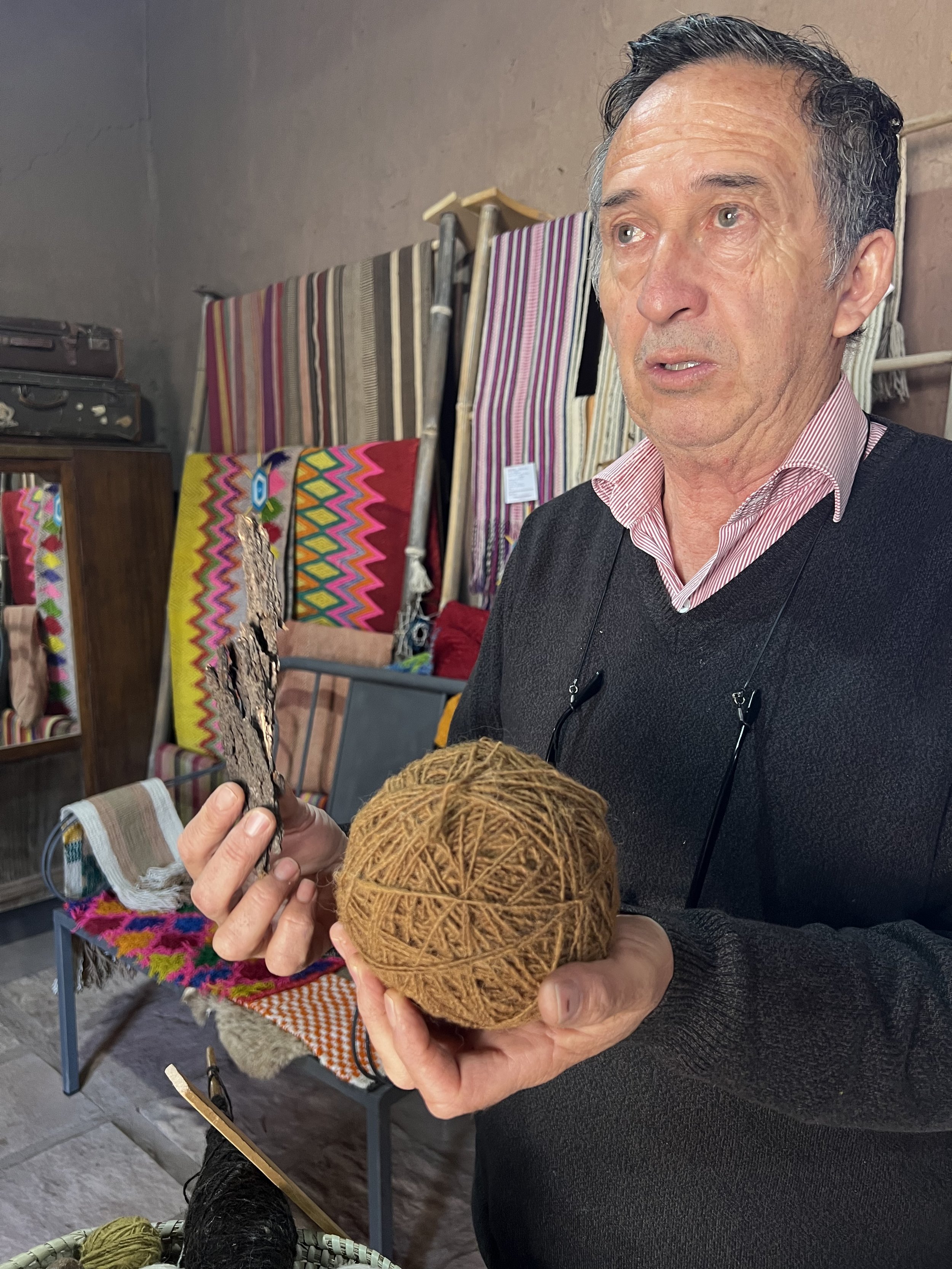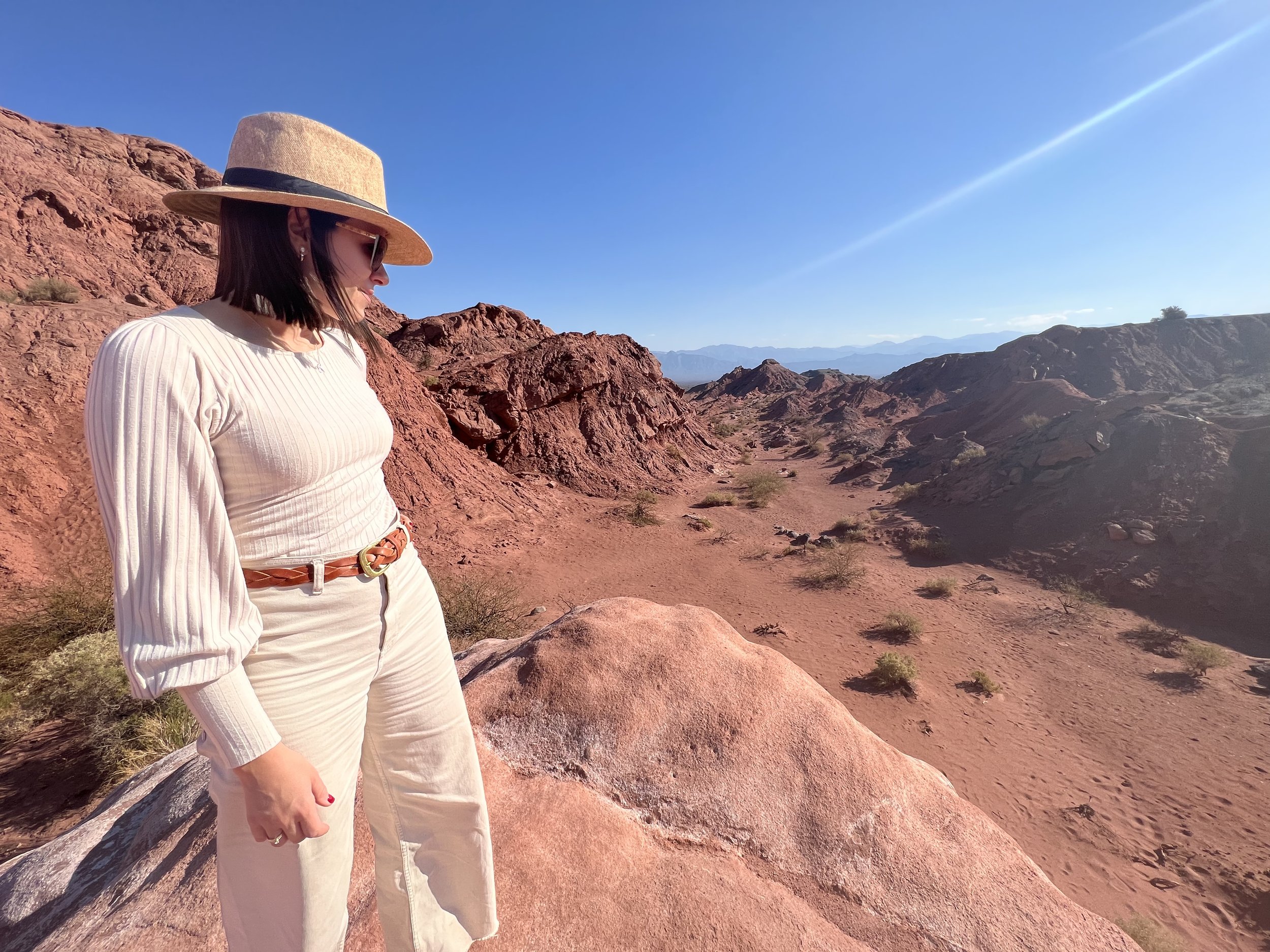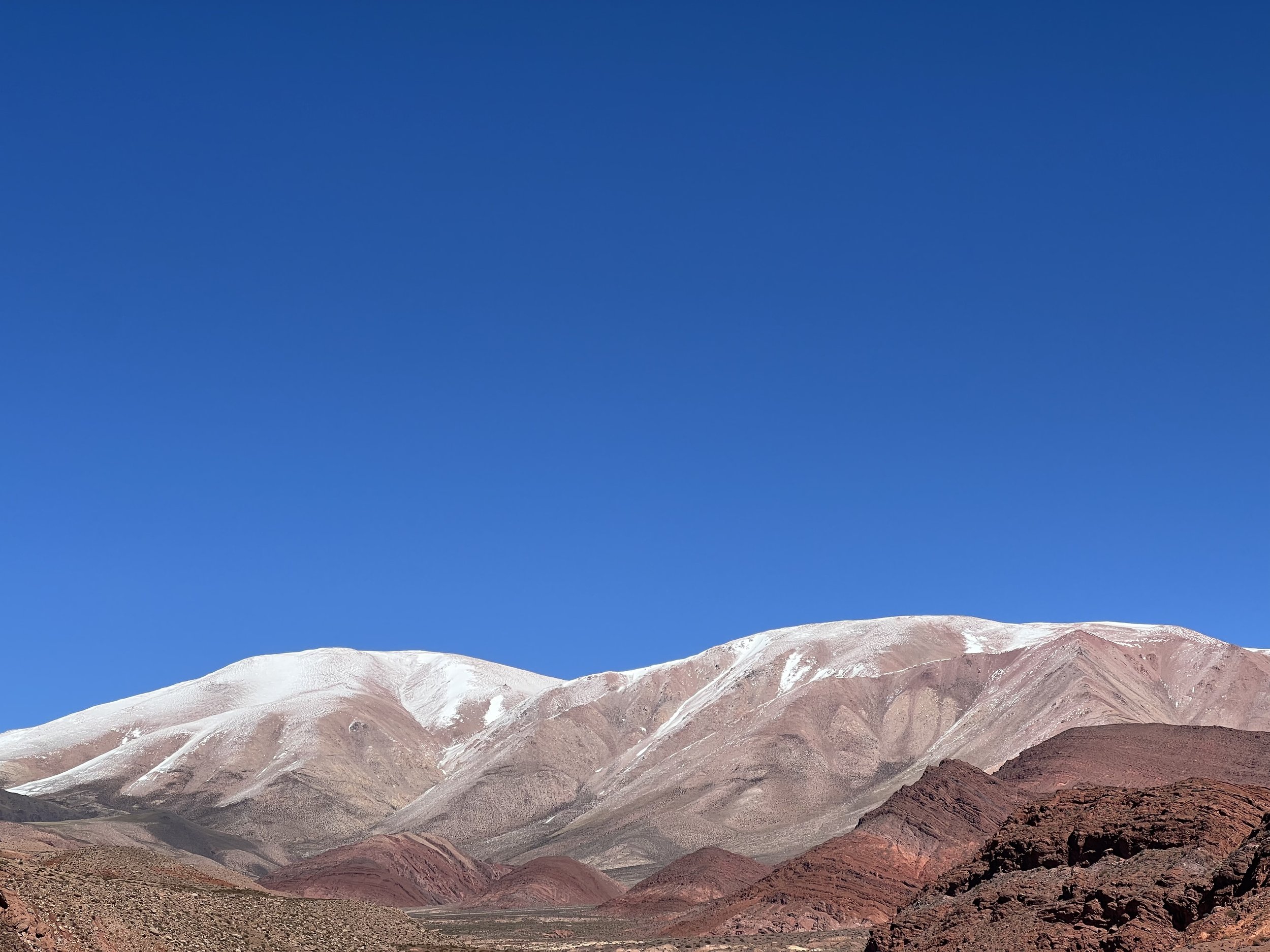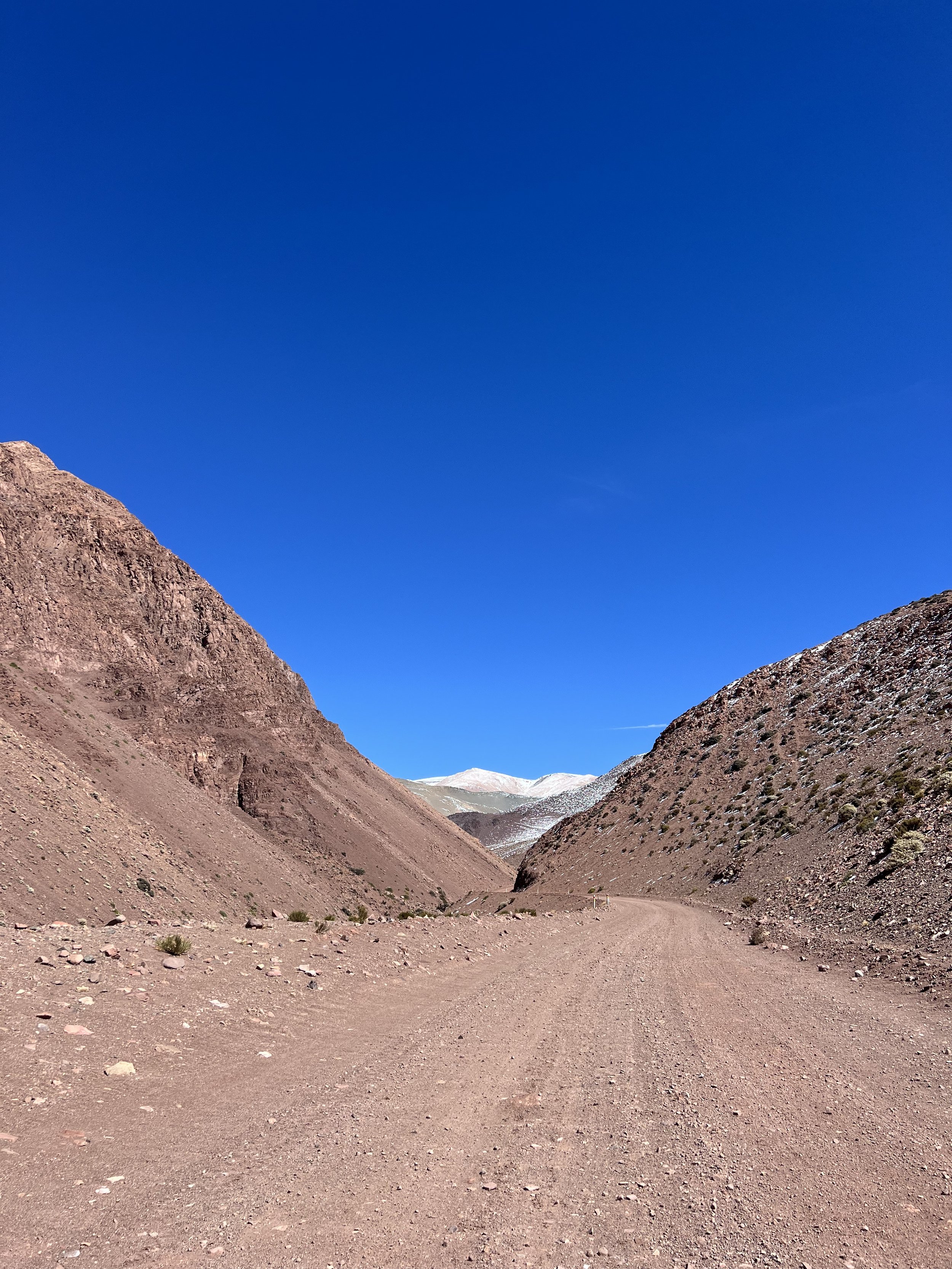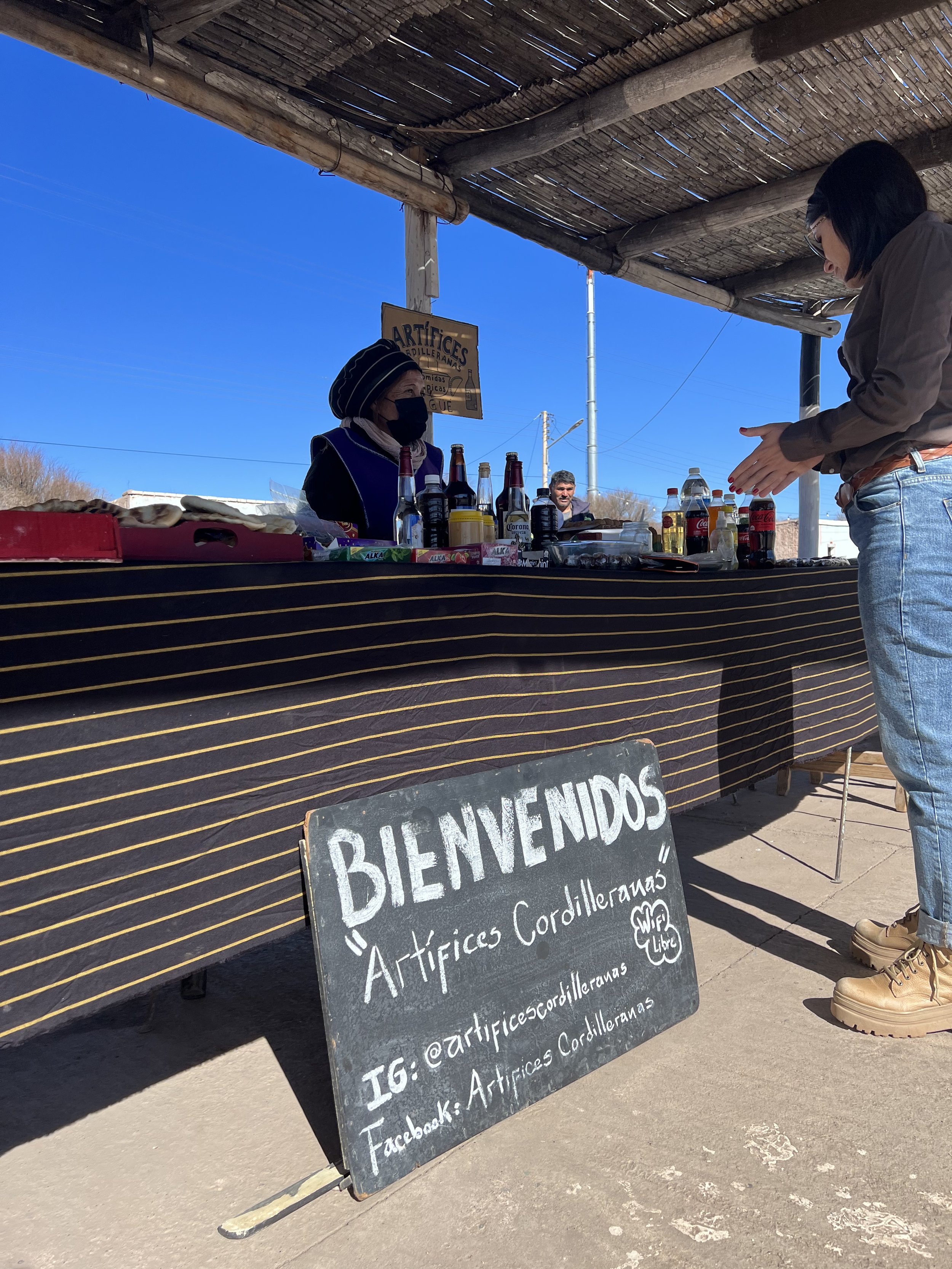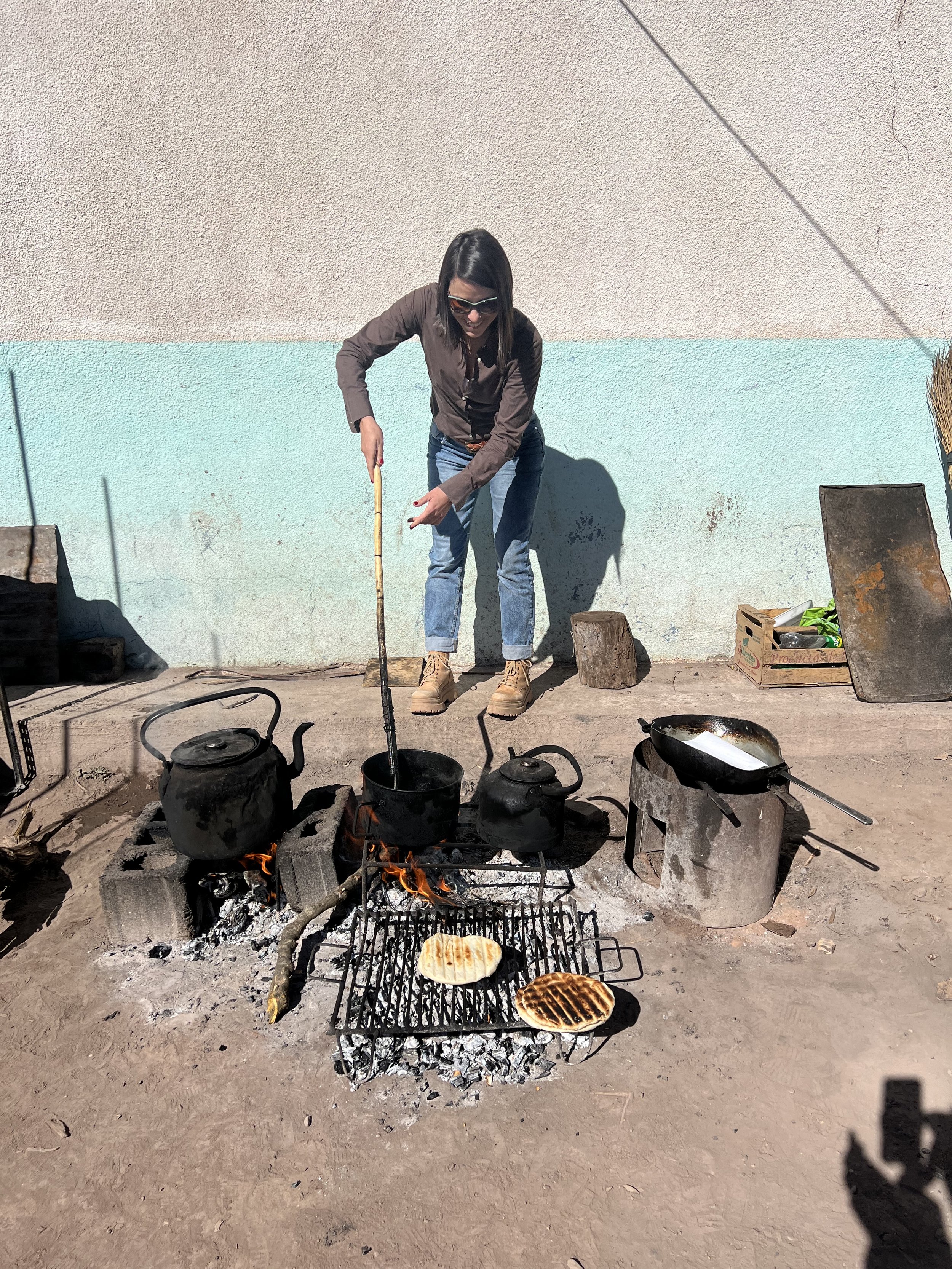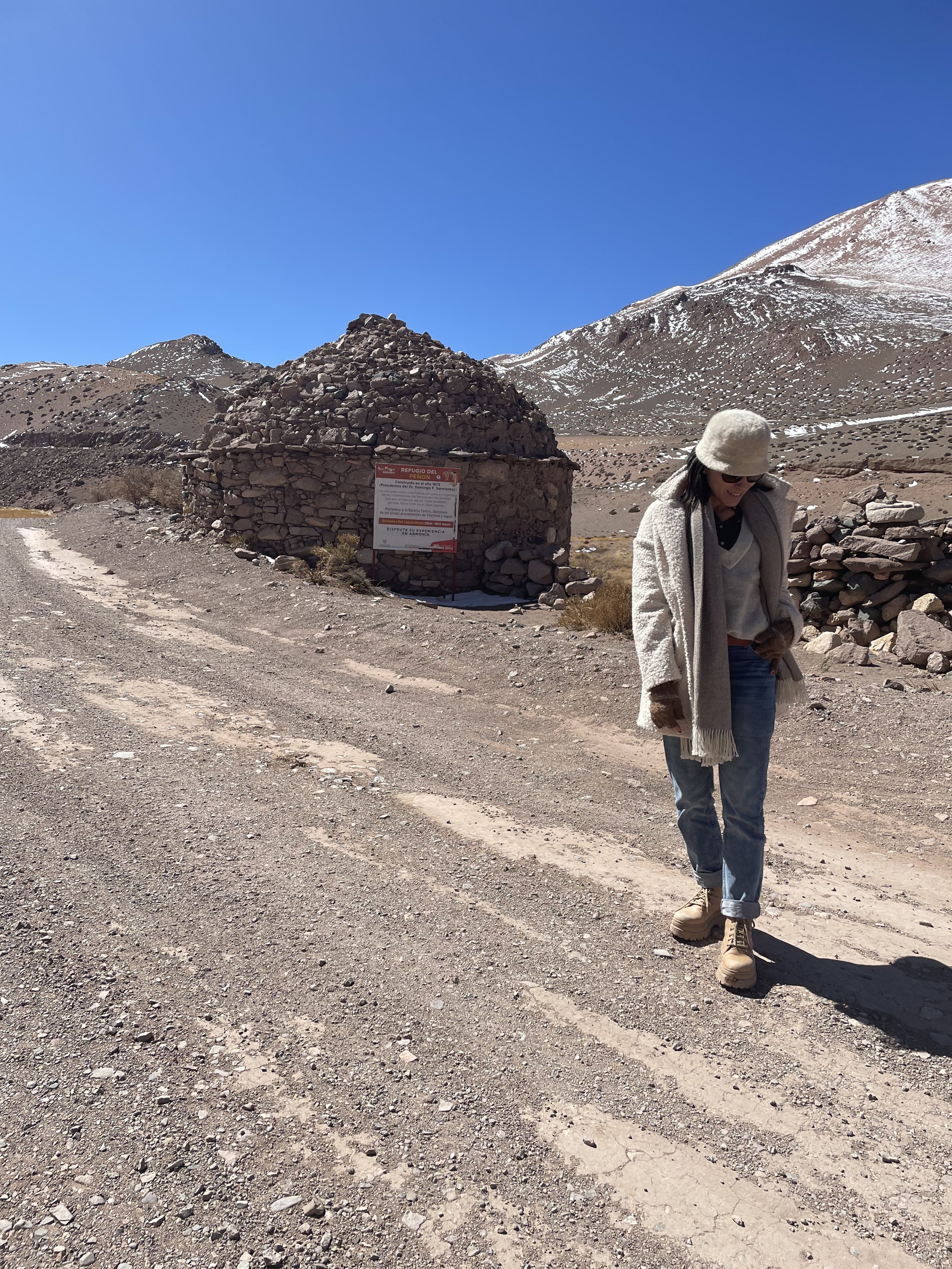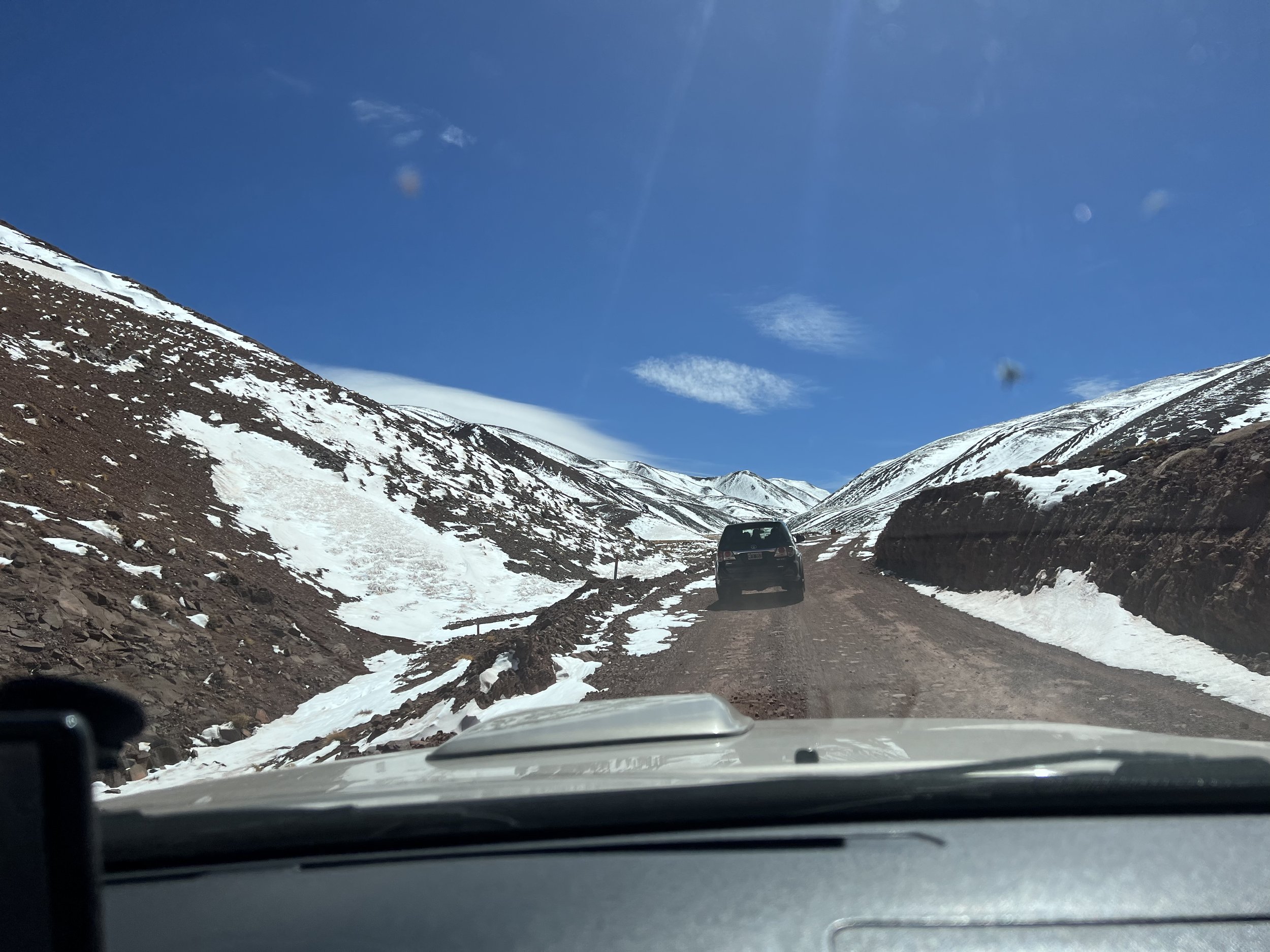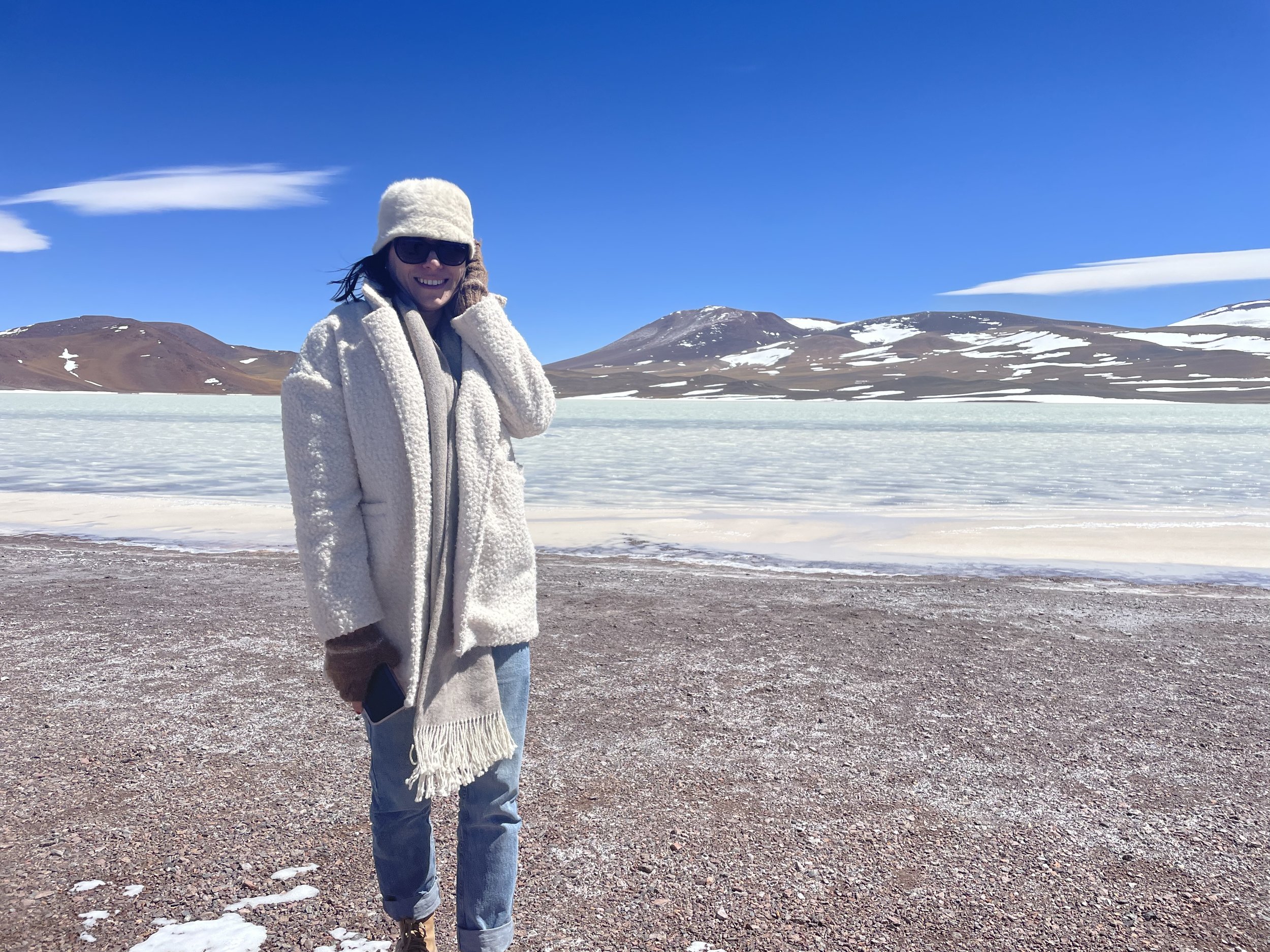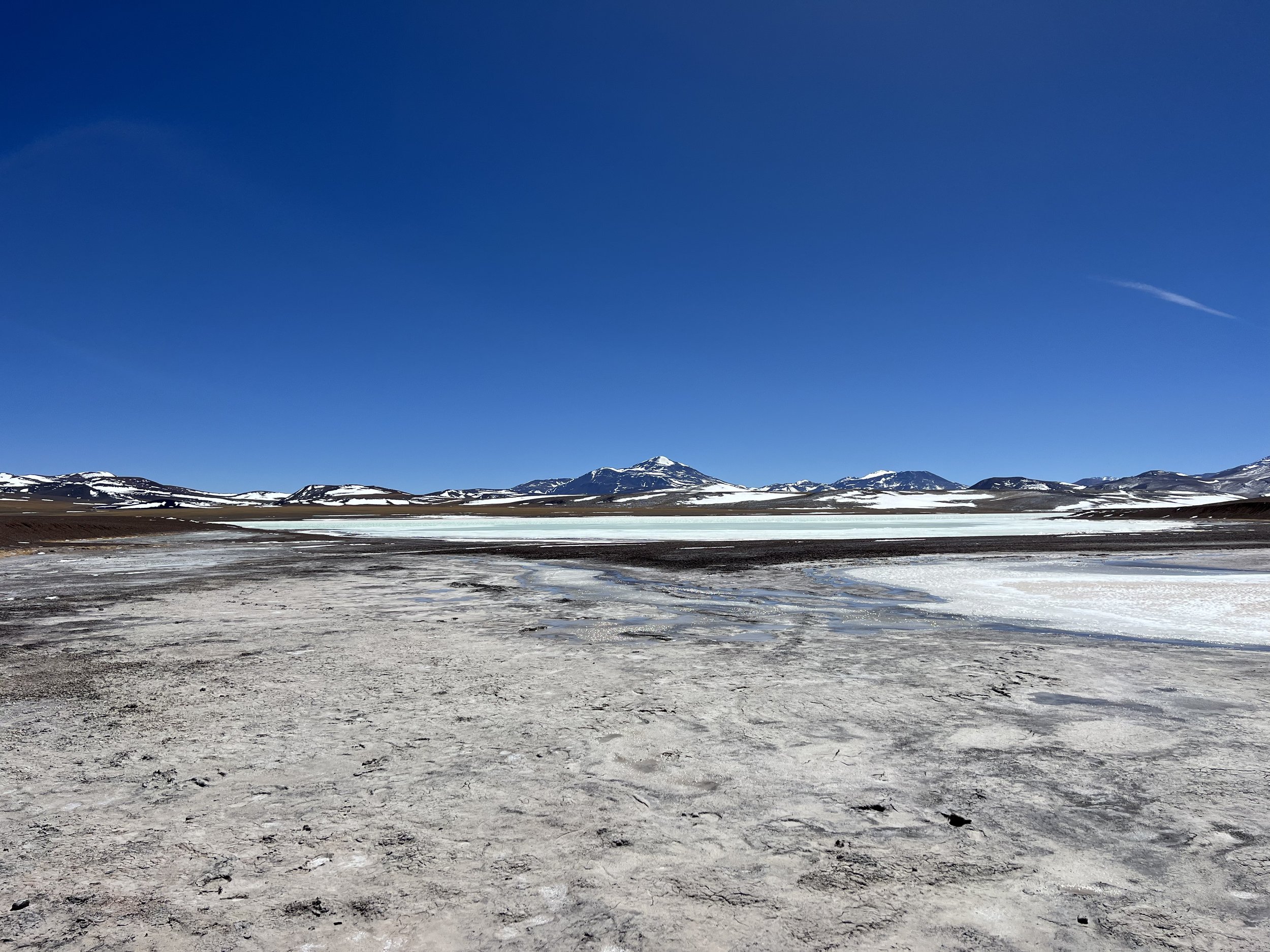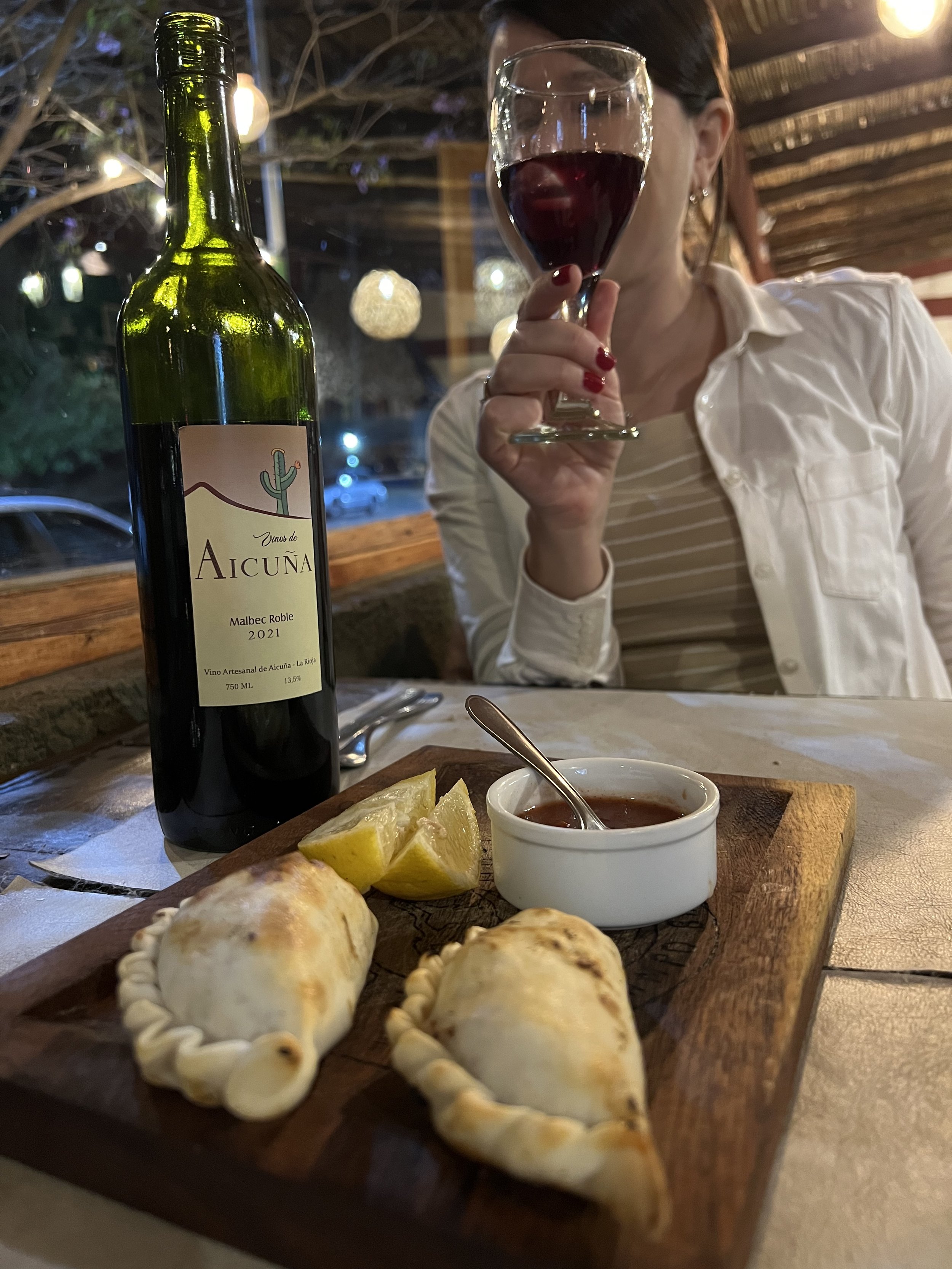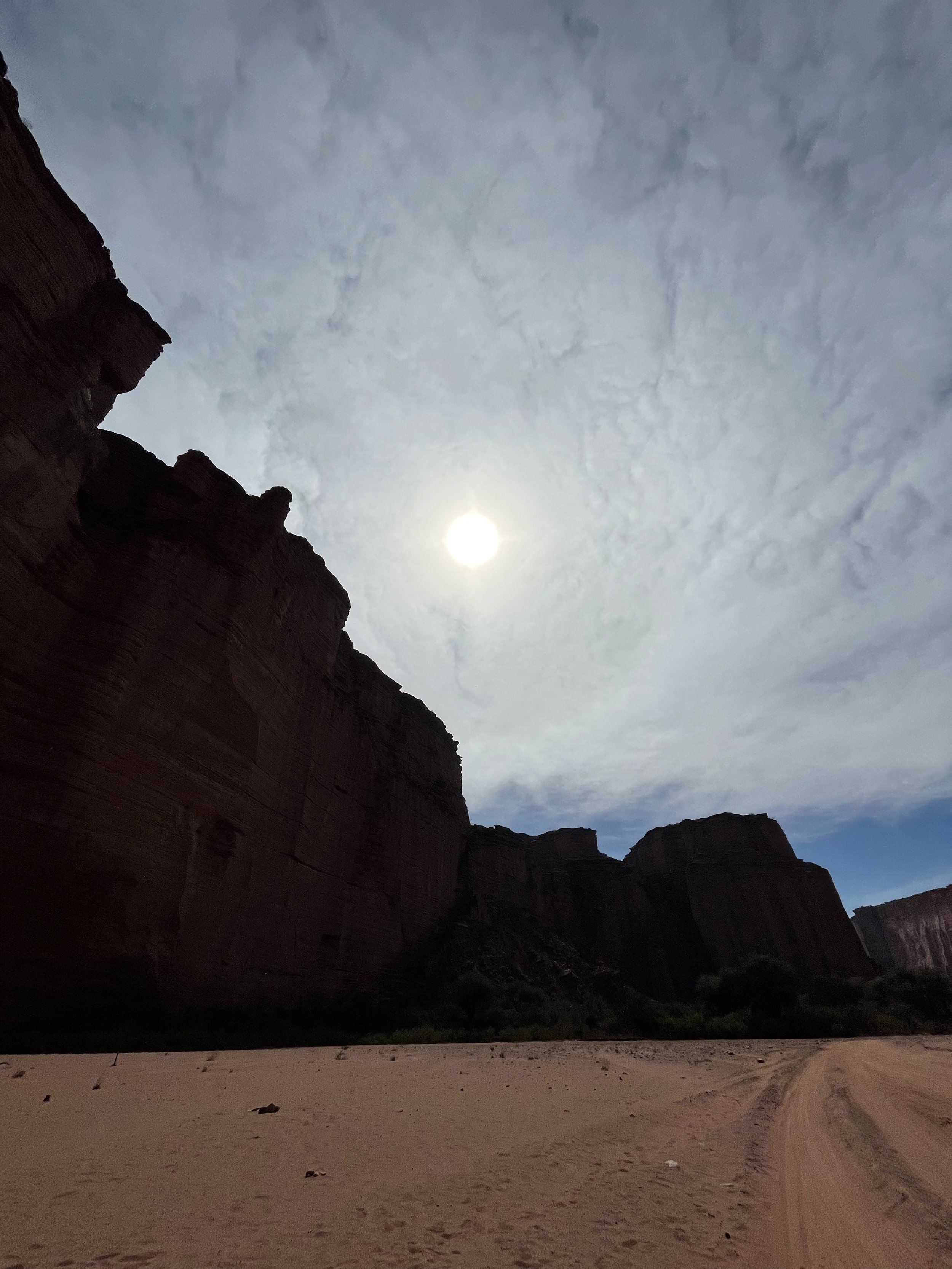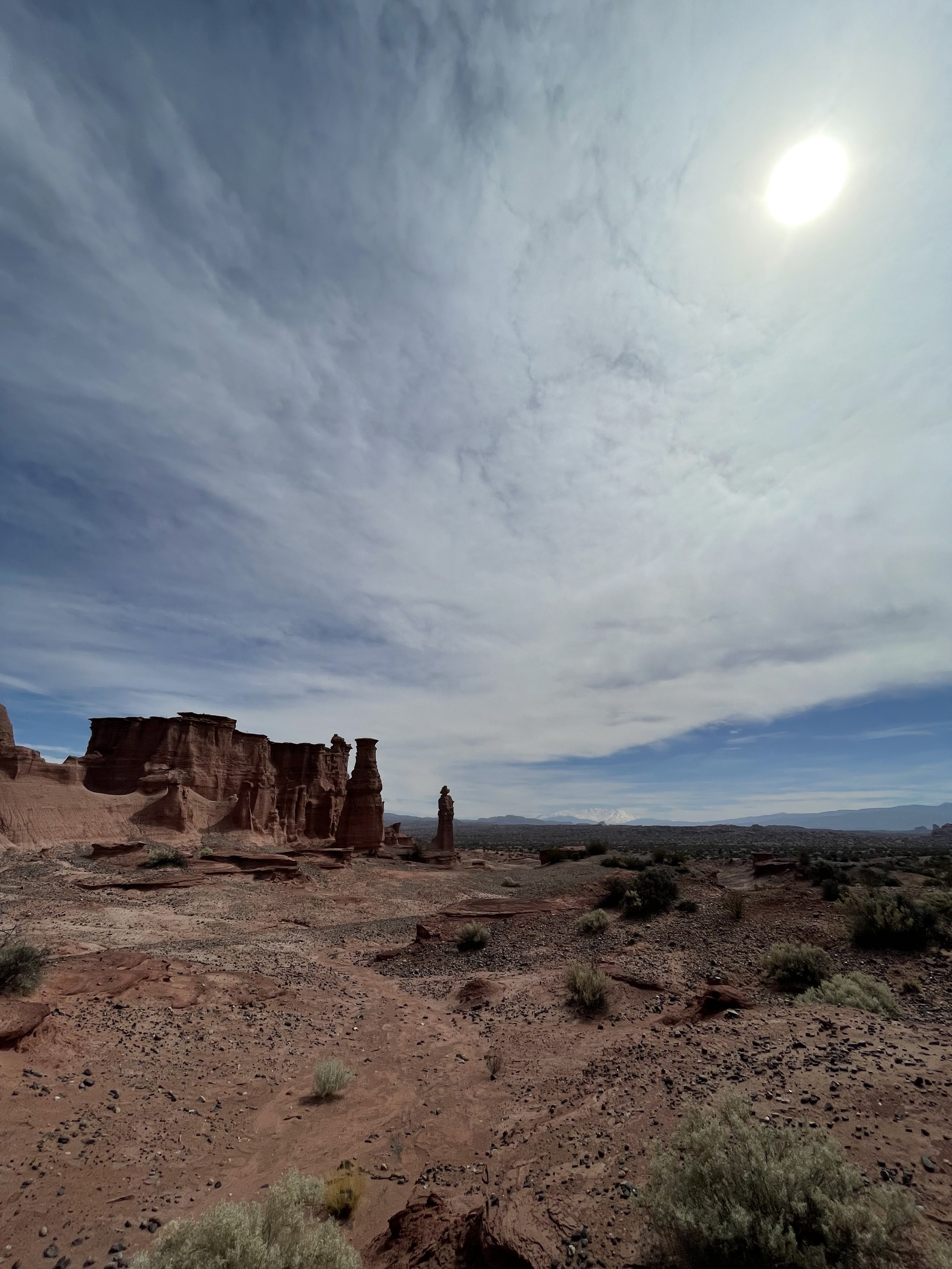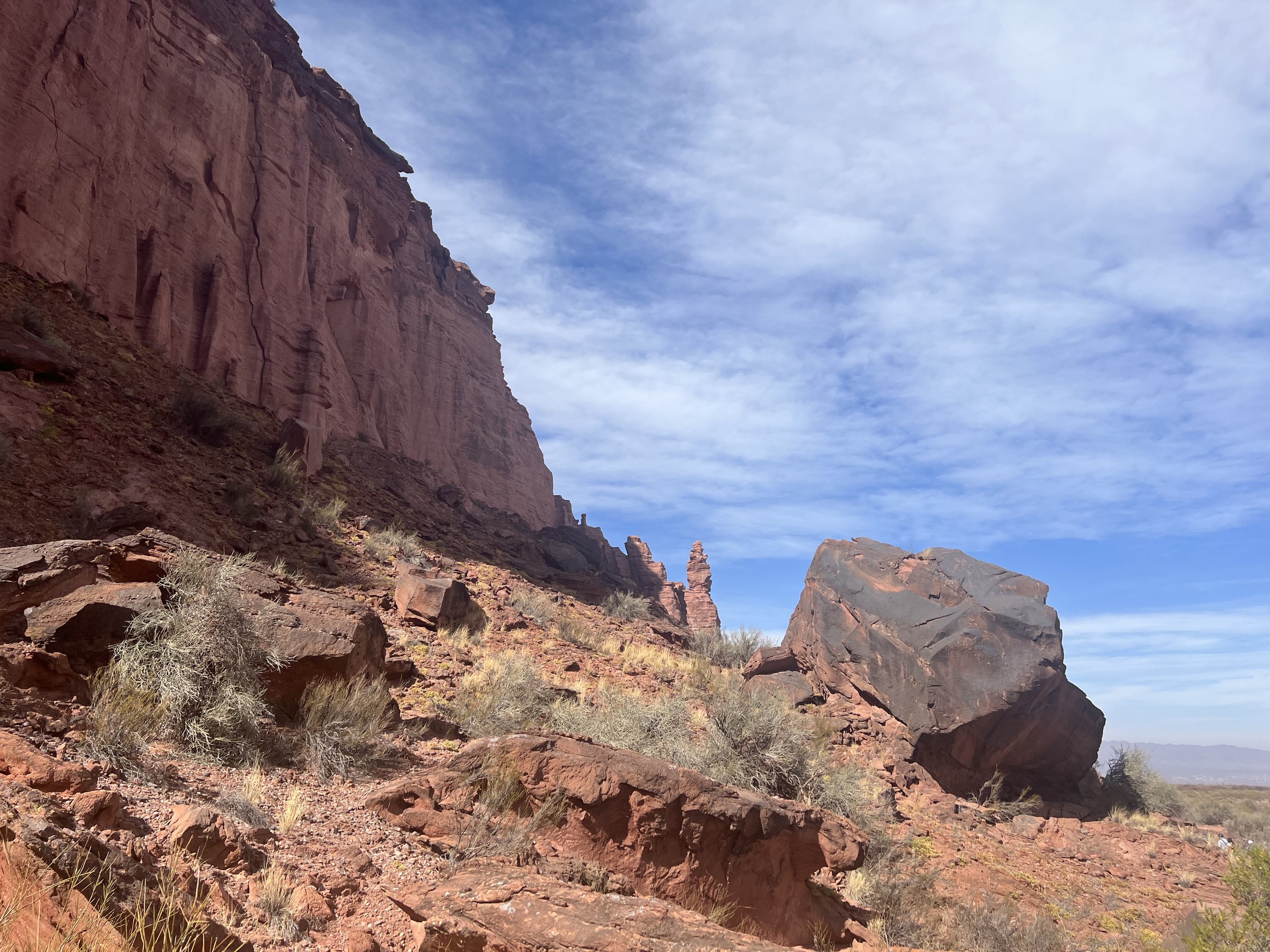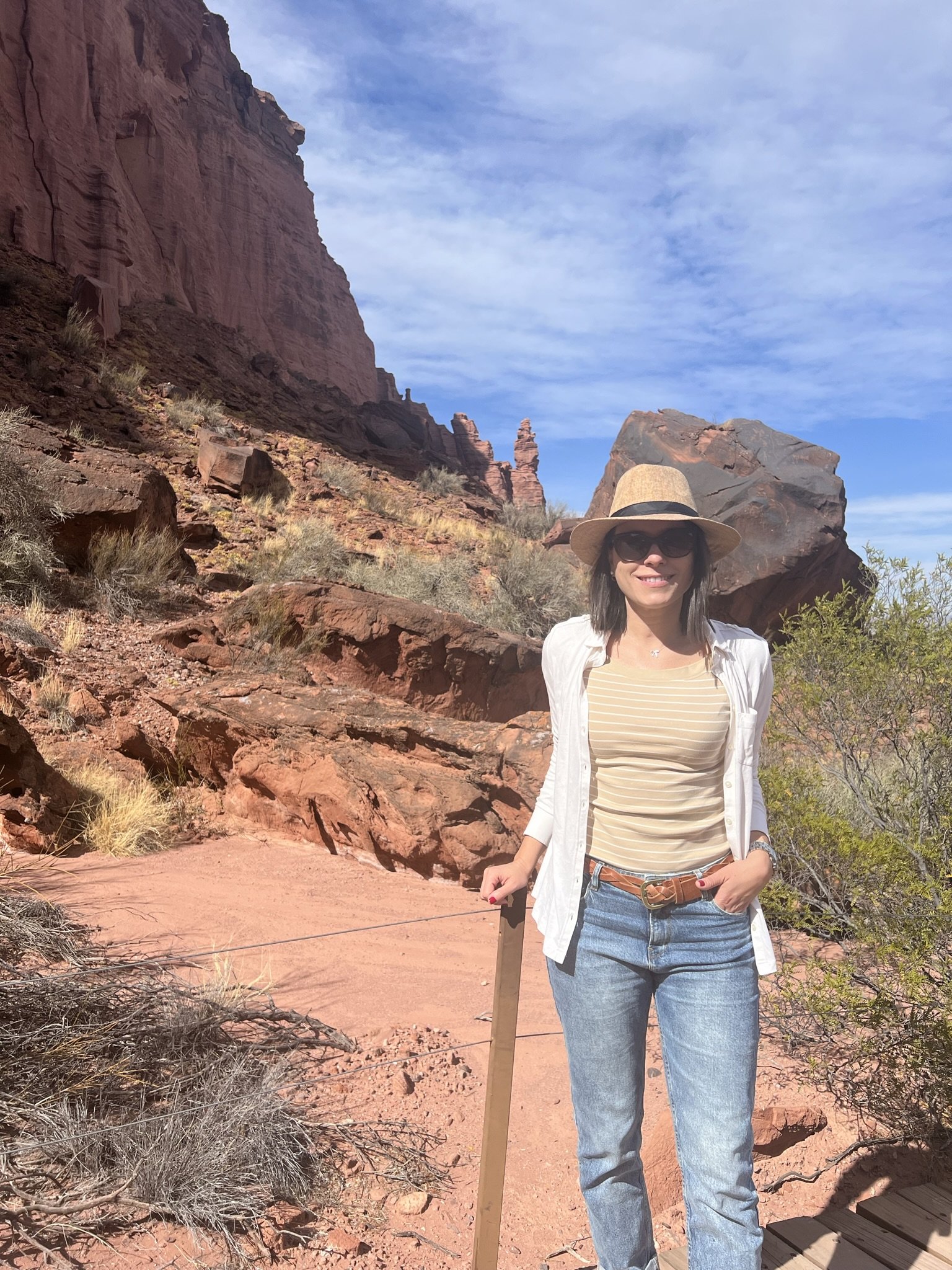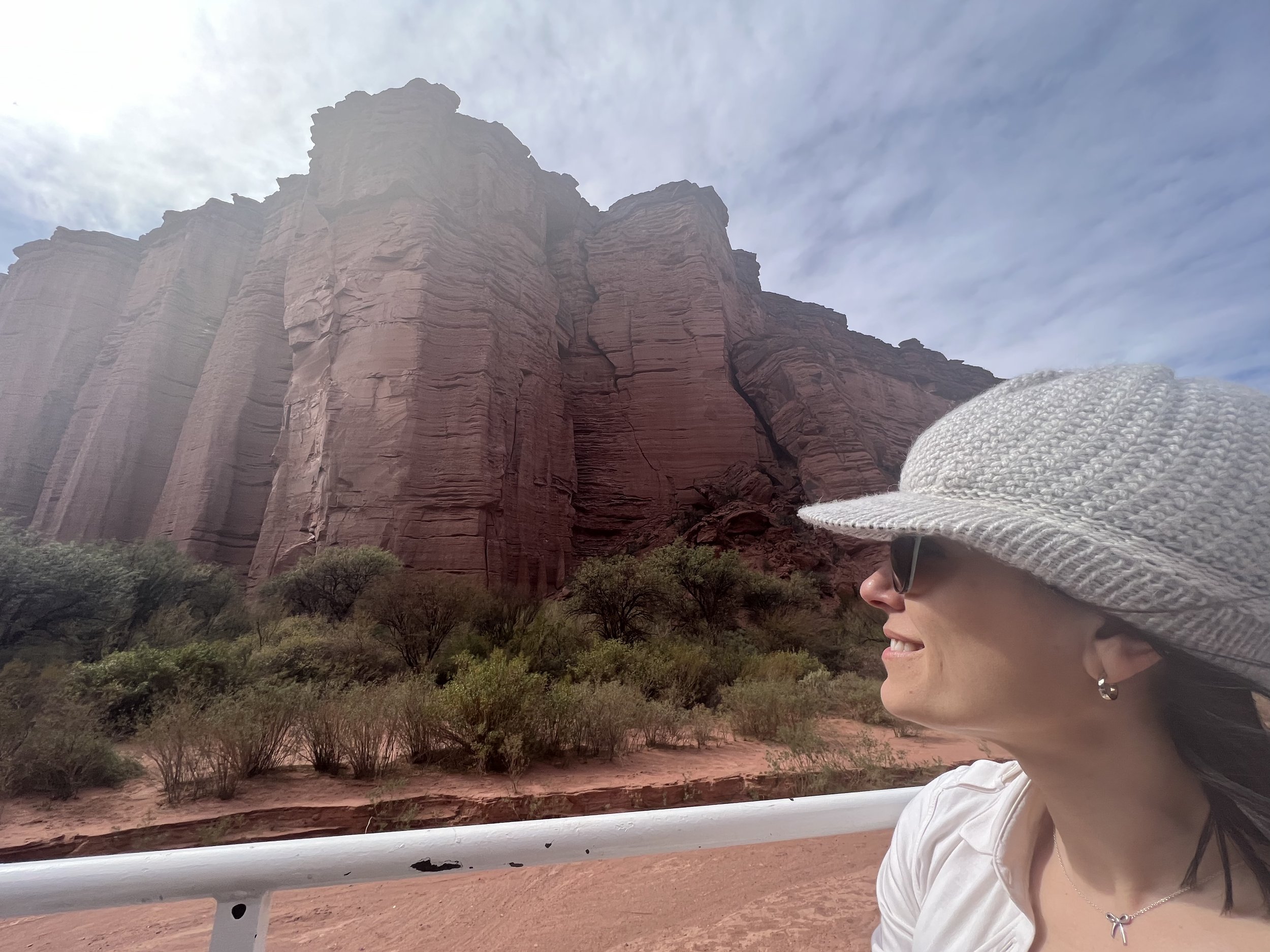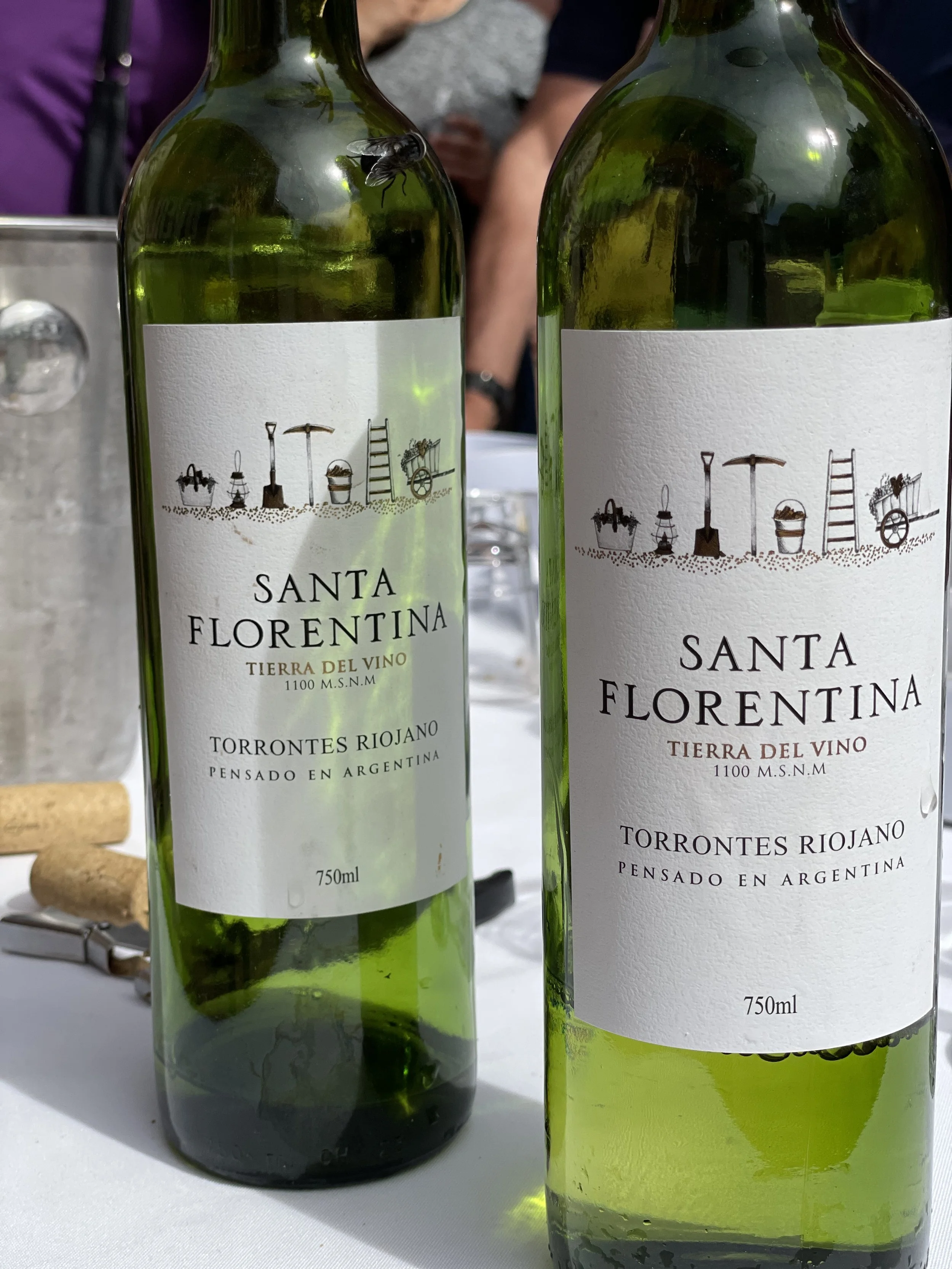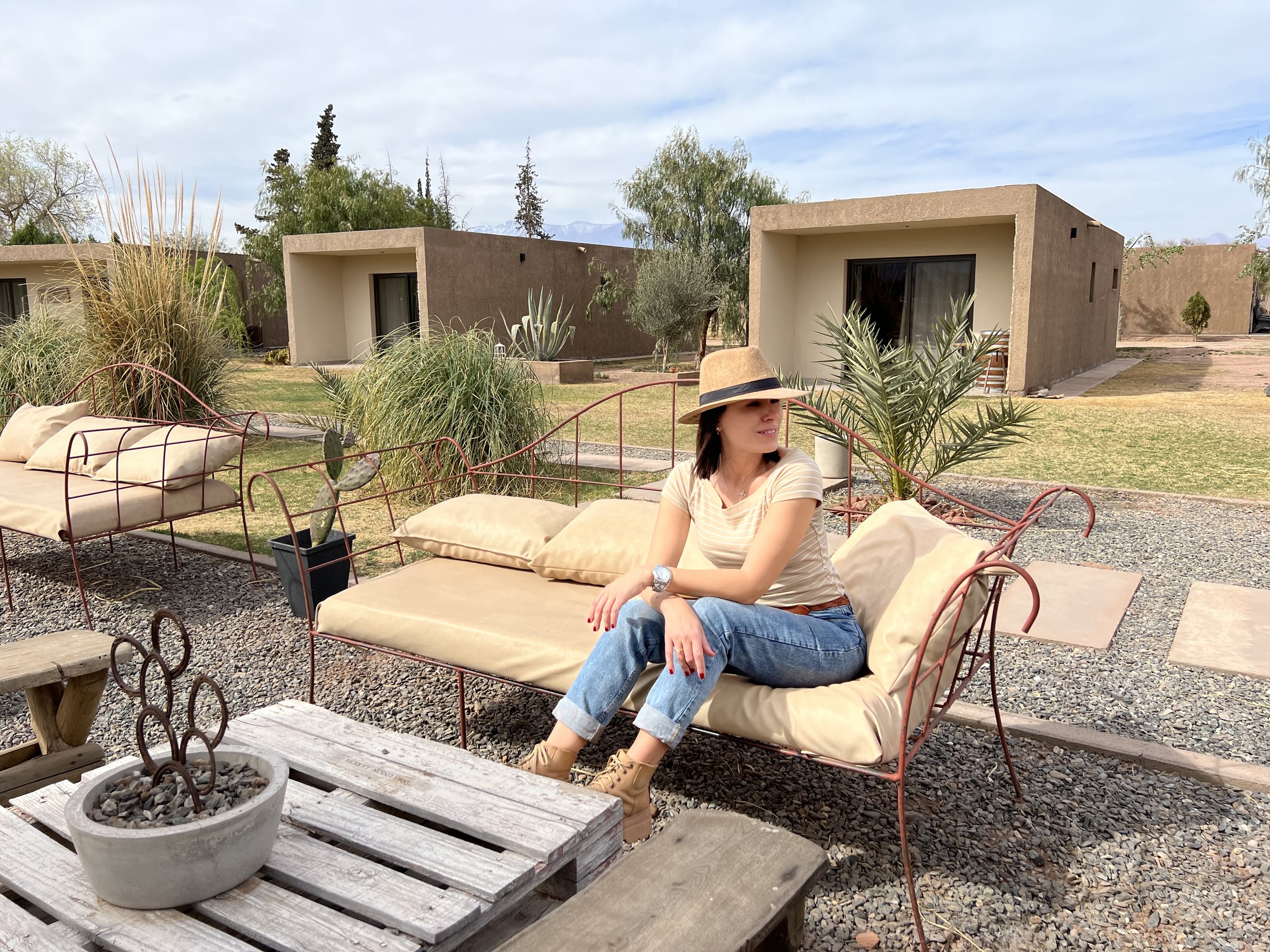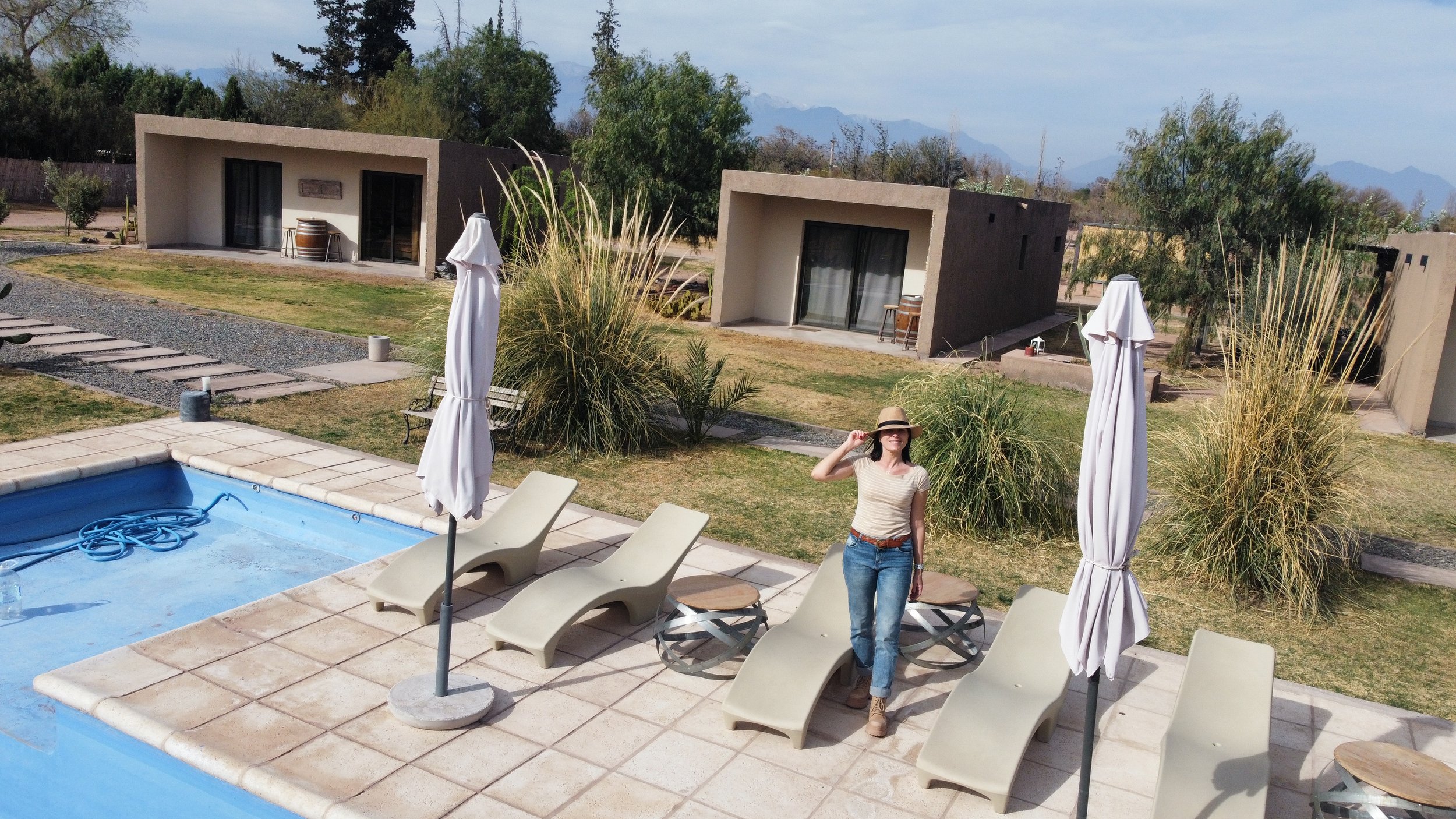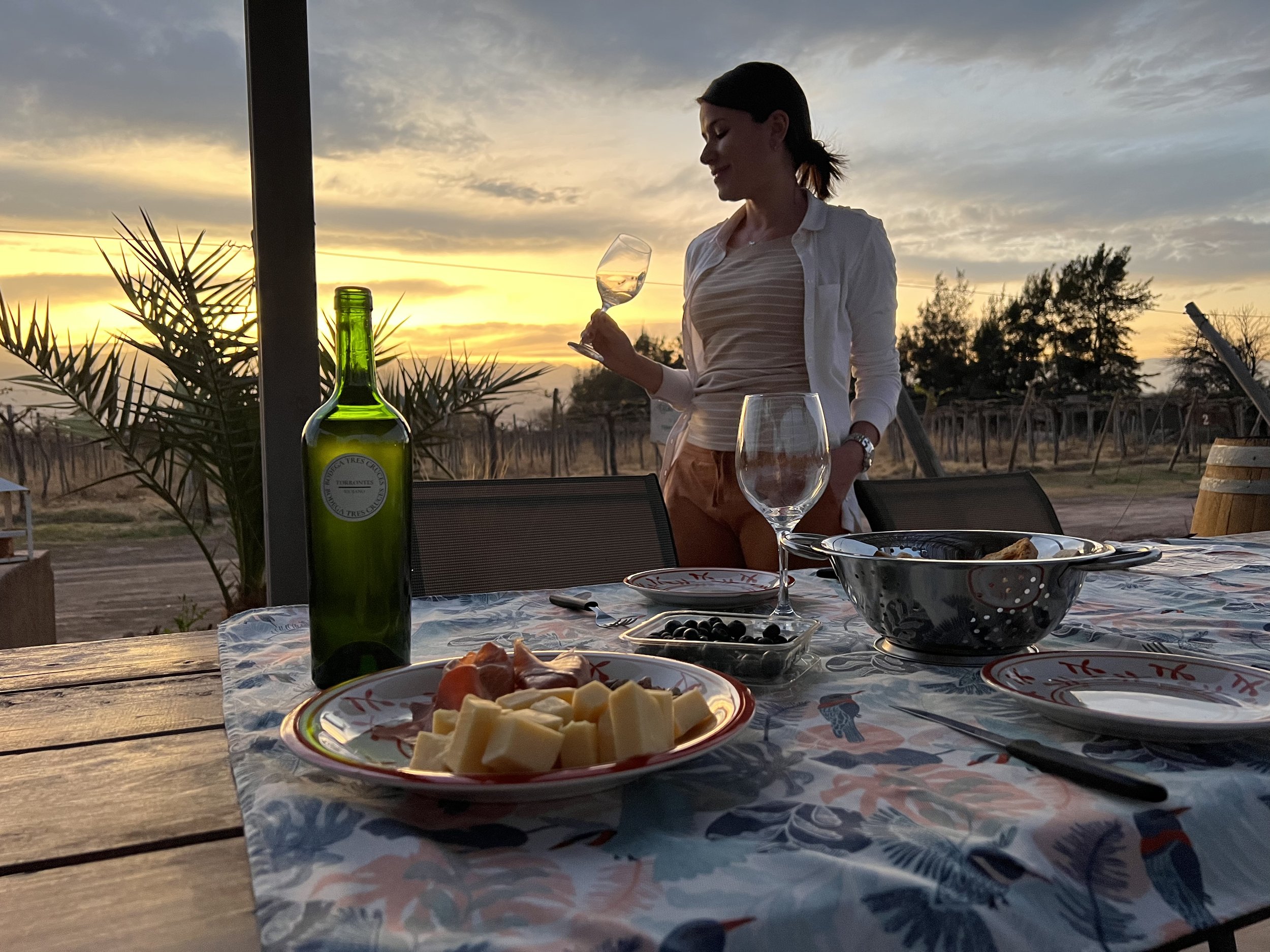Talampaya and Laguna Brava
La Rioja's super scenery After a short but very profitable visit to the city of San Juan, where we enjoyed its art, gastronomy and wines, we took Route 40 heading north to Villa Unión, the strategic city of La Rioja which serves as a base to explore the main natural attractions of the region.
An important clarification, the road includes one hundred and fifty speed bumps between Huaco and Guandacol, so in summer time it suffers cuts due to the violent downfalls of water. In addition, for those who have an easy way to break down on the roads, as is the case of @tripticity_, the journey can become complicated with so many ups and downs.
Well, just when the Famatina begins to be seen, with its white immensity that dazzles the whole fertile valley of La Rioja, Santa Clara approaches, the hometown of Nicolás Fajardo, the artisan who opens the doors of his workshop so that visitors can be transported in time and discover the universe of weaving. From the spinning of the wool to its coloring with natural dyes, from the use of the loom to the final details, the whole process is explained by Don Nicolás, who, during the sacred siesta time, did not hesitate to welcome us when -following the instructions on the sign- we phoned him to announce us. He inherited from his ancestors the knowledge to preserve and maintain the ancestral technique of loom weaving.
In addition to touring the adobe-walled and reed-roofed workshop, we visited the adjoining room where his grandparents slept, where he put together a small display of antique objects and family memorabilia. In the gallery, he showed us how, using onion peel, a beautiful grayish color is achieved in wool. To close the visit, Don Nicolás looked for his mother's old poncho, a centenary heirloom with wool from nine vicuñas, which is a true work of art.
It was a stop to appreciate the tradition of the loom and the simplicity and cordiality of the people of La Rioja.
We continued on our way, and before arriving at Villa Unión, we took the obligatory photo at the Vallecito Encantado in Guandacol, where after a very short walk we found the geoform known as Copa del Mundo, a ball of reddish stone in the middle of a red valley that feels like having arrived on Mars.
Once in town, we stayed at Cuesta de Miranda, a three-star hotel that was just fine for the first few nights we slept there, as we spent the day walking around and sightseeing. It is already a custom of @tripticity_ to book the first nights in hotels without major luxuries or aspirations that satisfy the need for a good bed and hot bath, and then move to another accommodation that offers greater benefits to enjoy them in relaxation.
The first night we decided to have a picnic by the pool. It was sunset time, so the sky was transformed into colors generating the perfect setting to savor the delicious ham we had bought at Miguel Martín Jamonería. It was also the perfect opportunity to uncork the Cansao, the San Juan criolla red wine that Alfredo Morales had generously given us as a gift when we visited his gastronomic mecca Pal Pueblo.
In the morning, after breakfast, we set off for Laguna Brava, the great natural attraction hidden in the Andes Mountains.
Once we arrive at Vinchina, the town from which the baqueanos (local guides) who must accompany the visitor are also offered, since the visit is not authorized without the company of a guide, we enter the Quebrada de la Troya (Troya Ravine). Vinchina means fertile land, as opposed to Ischigualasto (the Valley of the Moon) which refers to dead land.
Then we stopped at La Herradura, a particular formation produced by the erosion of the river.
Around eleven o'clock in the morning, we made a stop at Alto Jagüel, where the locals offer tourists their gastronomic proposal. Our choice was a couple of lamb empanadas fried in fat, in an old rusty pot over a wood fire. As an extra, tortillas filled with ham and cheese with tomato. Doña Cecilia makes and sells them, but the show is undoubtedly produced by Don Juan, who keeps the gnawed pan in which the delicious pastries are fried hot. Of course, we did not hesitate to try them. We also got a bag of crispy wheat, a sweet and crunchy snack.
Once we got back on the road, we could soon see both Bonete Chico and Bonete Grande up there.
On the way to Pircas Negras international pass, the mountains are black colored by magnesium oxide, which generates a very unique optical effect, because it shines in the sun; the locals call it the varnish of the deserts.
In the background, the pink and white volcanoes are totally pristine.
Another stop was the visit to one of the fourteen shelters that Sarmiento ordered to build back in 1876, all in the shape of an oven, made of stone. A little documented tradition tells that his idea was generated in his youth, when he had to take those paths fleeing from a literally embarrassing situation.
A few days before our visit, it had snowed heavily so that the entire route was stained by thick white patches.
After almost four hours, we arrived at Laguna Brava, a beautiful mountain mirror at four thousand four hundred meters above sea level, inserted in the old muleteers' road, the same one that inspired Atahualpa Yupanqui for his famous zamba.
Its light blue color contrasted with the browns of the mountain. Getting there felt like an achievement. We appreciated the beauty of the landscape and the freshness of its high altitude air and started the long return.
After a rest at the hotel, we decided to have lunch at the restaurant on the main street of Villa Union, Base Camp, where all the visitors gather after the hard and tiring hikes. An excellent pizza with giant olives and a local wine, plus a tiramisu graced that dinner.
The next day we headed in the opposite direction, towards Talampaya National Park Parque Nacional Talampaya for an unforgettable visit.
It is a protected area, declared Natural and Cultural Heritage of Humanity together with Ischigualasto, because together they safeguard the geological testimony of the Triassic era. In fact, it contains archaeological and paleontological sites and even older strata.
From the service area we set off on our excursion in a 4x4 truck. We walked among the red walls of Talampaya, walked through its dusty beds, crossing with guanacos and foxes, watched at all times by the impressive number of condors that glide around.
The tour allows us to enjoy the Talampaya Canyon and the Shimpa Canyon, where the canyon is no more than seven meters wide and the walls are about eighty meters high. During the busy tour we made several stops. First we discovered the petroglyphs, then the Botanical Garden, the Cathedral, the Monk and - finally - Shimpa Canyon.
The excursion includes a snack colossally orchestrated by Fanny and José, guide and driver, just when visiting the Talampaya Canyon and a final treat at the Shimpa Canyon, where besides delighting us with the typical Riojan olives, we tasted the torrontés sparkling wine from Santa Florentina, from Cooperativa La Riojana, which we would later visit during our stay in Chilecito.
Note: busy is a sophisticated way of describing the trip to the heart of the park. At times you feel like you are inside a blender, which is fun but can mean suffering for those who suffer from chronic waist or back pain.
We returned to Villa Union to check in at Tres Cruces Wine Lodge, the resort we chose for our last stay. We stayed in one of the nine Casas de Viñas.
There we relaxed, enjoying the comfortable facilities and ample gardens, from which we enjoyed another great sunset accompanied by a picada and complimentary wine produced by the lodge.
It was the best way to end the visit to those extraordinary extreme landscapes that La Rioja offers, before crossing the Cuesta de Miranda and continuing our epic journey through western Argentina.





